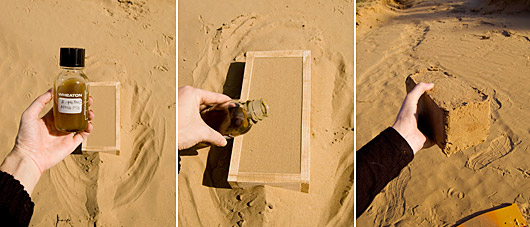What would the world be like if we could build houses out of bacteria? For starters, the story of the Three Little Pigs might have ended very differently. But biomanufactured bricks, made of a mixture of sand and non-pathogenic bacteria, could also help house people in developing countries while saving almost 800 million tons of CO2 every year.
The bricks' big innovation is that they don't have to be fired. The bacteria harden the sand by inducing calcite precipitation, which basically turns the sand into sandstone. There's no heat required, and once you've made the bacterial activate, every other part of the process is low-tech enough to be done on-site in developing countries.
No-bake bricks sound like a mild convenience, but they could actually have a huge climate impact. Making and firing bricks by hand, as people often do in places without modern manufacturing equipment, is massively carbon-intensive:
There are over 1.3 trillion bricks manufactured each year worldwide, and over 10% are made by hand in coal-fired ovens. On average, the baking process emits 1.4 pounds of carbon per brick – more than the world's entire aviation fleet. In countries like India and China, outdated coal-fired brick kilns consume more energy, emit more carbon, and produce great quantities of particulate air pollution.
(It's a little hard to verify these numbers, which are almost too stratospheric to be believed, and mostly show up in reporting about these bricks. The scourge of aggregators! Ahem. But if there are really 130 million bricks made by hand worldwide, and they really emit 1.4 pounds of carbon per brick — each of which I did find in other sources, though in both cases they were sites selling lower-carbon brick-making alternatives — they certainly outstrip world aviation.)
That coal-fired oven pollution is the "black carbon" we were talking about yesterday. So the bacteria bricks, which were developed by architecture professor Ginger Krieg Dosier, could save lives as well as cutting carbon.



